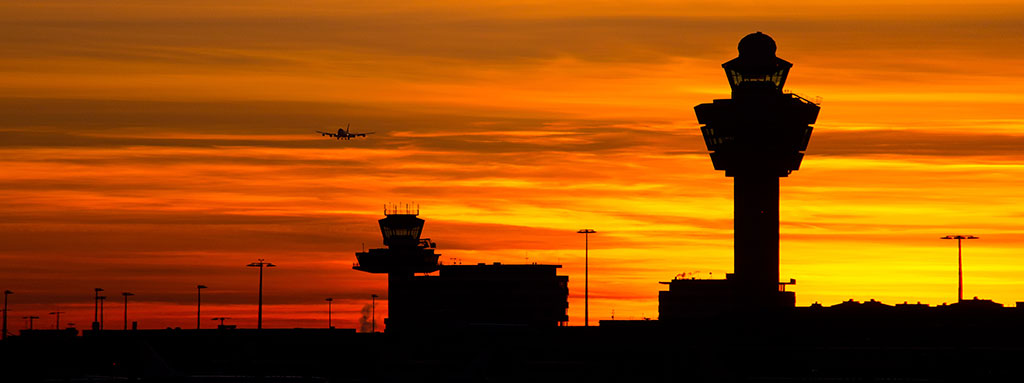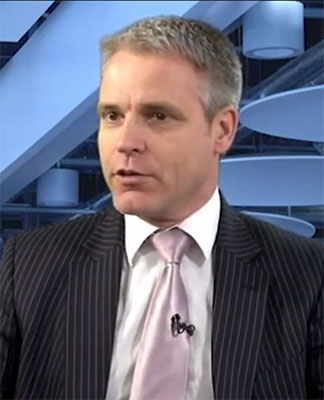
In this edition of our newsletter, we had the pleasure of interviewing Paul Willis, Global Head of Aviation of ARCADIS. He gives us his expert insight into the aviation sector, including his view on how European engineering and consultancy firms should approach the market.
![]()
The outlook and the trends for the future in the sector are nothing but positive, but how does aviation in Europe, considered a saturated market, compare to other emerging markets such as Asia, Middle East and Latin America.
In terms of trends I would say that the emerging markets are all about building new infrastructure, while in Europe the trend is more towards improving existing infrastructure. Therefore the opportunities are different, in Europe it’s about maximising capacity at existing airports, so companies like AERTEC Solutions and Arcadis have a proposition to each market that is slightly different. In the emerging markets we’re designing and building brand new runways, while in Europe it’s all about operational improvement.
Another issue of course in Europe is the on-going uncertainty with the Euro. The market conditions in terms of investment opportunity are slightly different, not as bullish as the emerging markets.
 As an expert consultant in the aviation sector, what is the difference between investing in infrastructures in mature markets such as Europe and US compared to investments in new airports in the Asia Pacific or Middle East regions?
As an expert consultant in the aviation sector, what is the difference between investing in infrastructures in mature markets such as Europe and US compared to investments in new airports in the Asia Pacific or Middle East regions?
Europe is about selling off state-owned infrastructure. The investor is looking for a return on existing infrastructure, while in the emerging markets it’s about building new infrastructure, and therefore what the return on investment for that new piece of infrastructure will be, whether it’s a runway, a terminal or any other infrastructure. The focus in Europe will be about improving the aero and non-aero revenue generation from existing infrastructure. For example can I maximise my retail offering by changing the retail or F&B mix to better attract a passenger spend. Or can I come up with a clever way to reduce the operational expenditure at the airport. Can I be smart about the technology that I’m using or can I be smart about the design I come up with to reduce the consumption costs of operating the terminal or airfield infrastructure. In the emerging markets however OPEX is not so much of an issue at the moment because staff costs and manpower costs are lower, and therefore that’s not such a drive. Their drive is to make sure that the infrastructure is designed to international standards, it meets the quality, and they can deliver it within the timescales to get a return on the investment.
What factors and challenges are taken into account when making decisions about investments in airport infrastructure?
For me it’s all about getting that return, making sure that the forecast demand is appropriate for the infrastructure that you’re putting in. If you think about the Middle East five or six years ago when money was no object, they were building infrastructure because they wanted to be the biggest. They wanted the tallest control tower and the biggest terminal, they were the key drivers. Now however it’s much more about what the market needs, and about the demand. They still want to be the best but now they are making sure that the facilities are matching demand, and that they are getting a reasonable return on the investment that they are making.
Oil prices are also having a dramatic impact on the region, they are not getting the revenues that they once had, so they are much more prudent now around having a justifiable business case.
What role must European engineering firms play? Do you think they should concentrate on specialisation or aim to provide the full package?
For me I think concentrating on specialisation is important. The market has changed quite a bit over the years. Five or six years ago the generalist companies were putting together and managing big work packages. I think now the drive is much more around collaboration and that is why we see working with a company like AERTEC Solutions as an advantage for Arcadis. Clients want to see expertise, they still want to see big packages of work to be pulled together, but they recognise the need for collaboration and niche expertise within a team. I think that’s something that we need differentiate ourselves on. Be an expert in what you’re good at and don’t try to be all things to all men.
Our approach is to be collaborative, a firm like AERTEC Solutions could cover the airfield area, with another firm such as Grimshaw for example providing the architecture, and we can cover other elements. We are happy to take the lead, but we recognise and name all our partners.
Public ownership of airports versus private investors: is there an ideal management model to improve competition and efficiency of airport policies?
I think for airports, given they are national infrastructure, probably the best way is to go through a concession agreement. This way you are not fully privatising or selling off the complete airport asset. You are releasing that asset for a limited period of time with an up-front fee being paid, followed by and annual concession fee. Then after and appropriate period of time, say 30 or 40 years, that piece of infrastructure either goes back into state ownership or more likely it will be tendered again for a further concession.
The “green” agenda is becoming more prominent in the strategy and development of airports. Reduction in CO2 emissions, use of biodiesel, electric transport, etc. In what measures are you currently working to achieve more sustainable airports?
Rather than separating the green agenda, we try to integrate it into our designs, and then demonstrate how the green agenda adds benefits to our airport infrastructure. For example if I design my airport or my terminal building for less water consumption, then I’m certainly applying the green agenda, but ultimately that’s giving me a benefit at the end, it is supporting my business benefits case. We look at life cycle costing, and what the overall benefit will be. For example, taking something your company does, airfield ground lighting. I may want to invest in LED design, which will be a higher capital cost up front, but over the whole lifecycle with that piece of infrastructure that I have put in, my returns are significant, because the electrical consumption costs over time are a lot less. Taking those issues into account is how we tend to play the green agenda.
The other issue of course is that aircraft are becoming quieter, we promote operational efficiencies around an airport to reduce CO2 emissions. We make sure that aircraft are taxiing for less time, pushing back for less time, these are the sorts of things we try to build into our models. I think where airports have gone wrong in the past is in having a specific green agenda that is not linked into the overall business case or into the operation. The two things have to hand in hand. The green agenda should be driving business efficiencies, if it isn’t then you have to be able to clearly demonstrate what the benefit is for the overall airport business case. Looking at the business case holistically is important in my view, if you just try and make it on green-related issues you just can´t get it to stack up.
According to the latest passenger traffic forecast report for the next 20 years by the International Air Transport Association (IATA), 8 out of the 10 fastest growing markets in percentage terms will be in Africa. The Central African Republic, Madagascar, Tanzania, Burundi will be the fastest growing markets in the region. How do you imagine these African continent airports in the future?
There is certainly massive development in Africa and we are pursuing good opportunities in the region at the moment. I think the biggest challenge that Africa has is that before they can invest in the infrastructure for the growth, they need to get their institutions and governments in place to be able to manage those airports correctly. This needs to be done on the one hand from a financing point of view, in how they invest in that infrastructure and make sure that it is done in the correct and transparent way. Then they also need to ensure that from a safety and economic regulation point of view they have the structure and organisation in place to manage that infrastructure. The danger in Africa is that there will be an explosion in the development of infrastructure, and it will be badly managed and therefore the infrastructure won’t be aligned with where the growth is, or the infrastructure will not be managed in the right way. Everything needs to be aligned in the correct way, and I think that is where they need help.
Which is, in your opinion, the best airport in the world?
It is very much dependent on the region, the airlines and the traffic that the airport is trying to attract. Singapore I think is a world class airport in terms of shopping experience, in terms of processing, in terms of landside and airside access etc.
I also think Heathrow terminal 2 is a fantastic terminal and a fantastic passenger experience. It is a world class terminal.
It is very difficult to say which is the best airport in the world, but Hong Kong is another great example. In terms of connectivity it’s fantastic. Munich is also another great example of a good airport operation in terms of efficiency and layout. Oslo is another really good example with regards to connectivity, it is quite a long way out but the train really works, it’s a good experience for the passenger. The new international pier at Zurich Airport is another good example of a transfer operation.
I don’t think there is a “one airport fits all”, but there are quite a few contenders.

